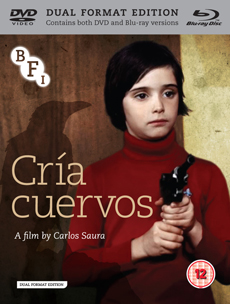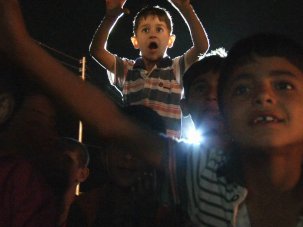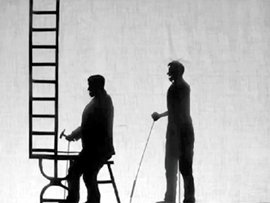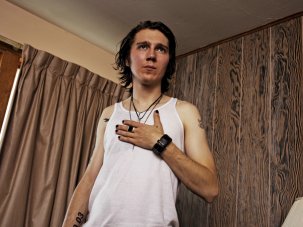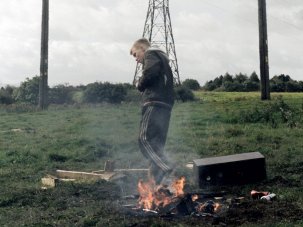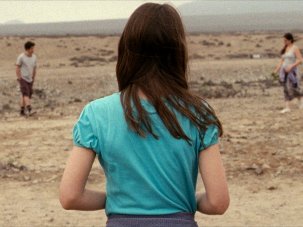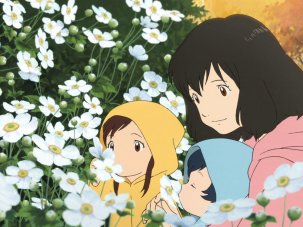from our April 2014 issue
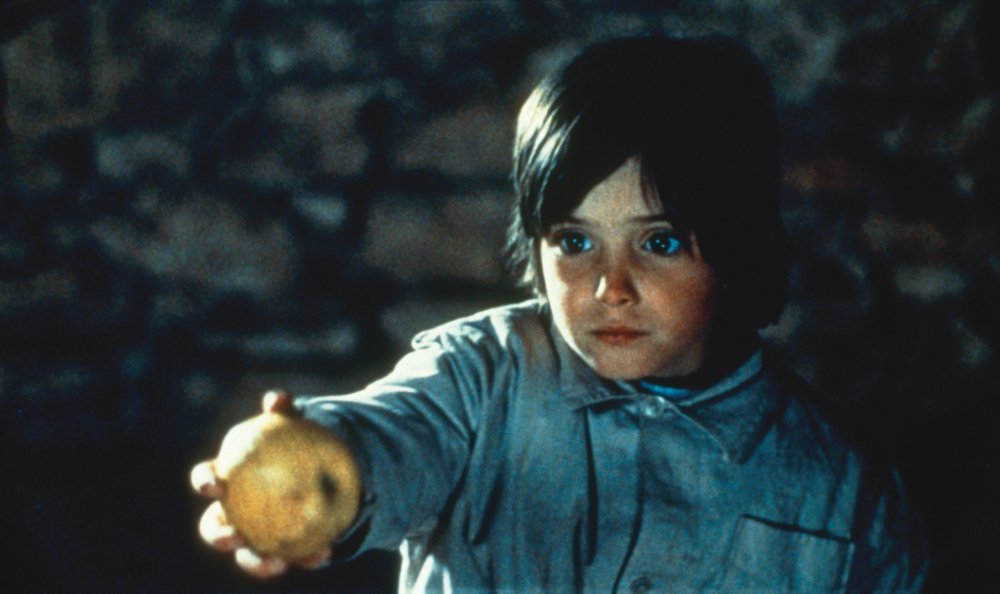
The Spirit of the Beehive (1973)
The recent death of 1930s child star Shirley Temple has brought to mind once again the long symbiotic relationship between childhood and the cinema, a relationship that stretches back to 1895 and one of the first home movies, Louis Lumière’s Baby’s Breakfast (Le Repas de bébé). The film, only 41 seconds long, observes Lumière’s brother Auguste and sister-in-law Marguerite as they enjoy breakfast with infant daughter Andrée in the garden of the family home, the trees rustling gently behind them. Little Andrée is fed a few spoonfuls by her father, who then hands her a biscuit. She inspects the biscuit before stretching out her hand to her uncle off screen. “Why don’t you have it – it’s for you,” her father seems to say as he pours her a little more milk, and the film ends.
A season of 17 films curated by Mark Cousins, Cinema of Childhood, runs April-July at venues throughout Scotland and the rest of the UK. Many of the films will also be available to watch online via the BFI Player and Filmhouse Player.
Mark Cousins’s A Story of Children and Film is released on 4 April in UK cinemas and on BFI Player, and is reviewed in the April 2014 issue of Sight & Sound.
This early cinematic snapshot of childhood was made by a filmmaker who was nonetheless rigidly ‘adult’ in the approach to his material. Lumière’s seemingly off-the-cuff execution belied the precision and calculation behind every shot. Baby’s Breakfast is very much an adult view of childhood, but to find the first filmmaker who captures the wonder, the freedom, the playfulness of childhood, we need only look to Lumière’s contemporary Georges Méliès.
Coming from a background in magic, theatre and spectacle, Méliès’s relationship with the cinematograph was like that of a child staring open-mouthed at a bundle of new toys on Christmas morning. (As Orson Welles later said, cinema was “the biggest electric train set any boy ever had”.) Méliès made use of all of the effects at his disposal to craft elaborate fantasy and trick films. In films such as A Trip to the Moon (1902), for instance, we see – in admittedly primitive form – a sort of childhood from the inside out, as opposed to childhood from the outside in in Baby’s Breakfast.
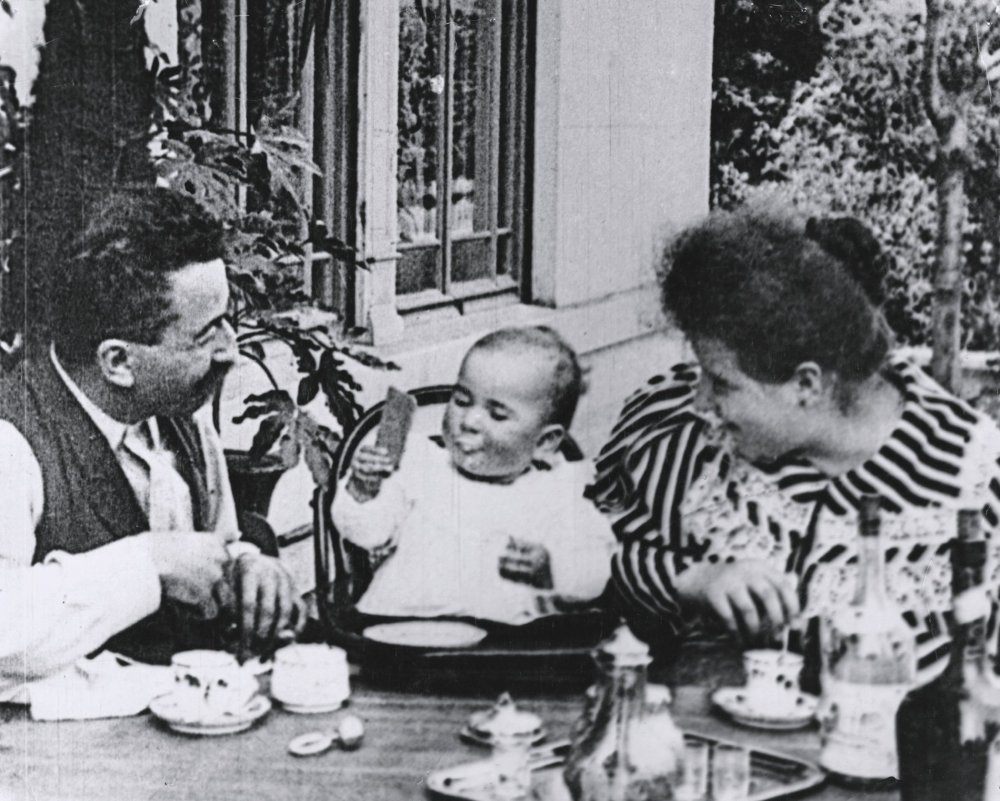
Baby’s Breakfast (1895)
Looking back at the vast quantity of films about the subject made since those early days, it’s clear that the best childhood pictures are those that have found ways to harness both methods, films that manage to approach childhood with adult acuity while in some way reflecting its undoubted otherness. The presence of a child often allows filmmakers to depart from conventional modes of storytelling, to wriggle free from the strict demands of plot. We see this in works as diverse as The Night of the Hunter (Charles Laughton, 1955) or Ratcatcher (Lynne Ramsay, 1999), Chickamauga (Robert Enrico, 1962) or Fanny and Alexander (Ingmar Bergman, 1982).
When young siblings Pearl (Sally Jane Bruce) and John Harper (Billy Chapin) escape the clutches of the homicidal preacher Harry Powell (Robert Mitchum) in The Night of the Hunter, Laughton’s camera follows the children as their boat glides slowly along the Ohio river. The pulsing drama of the chase fades away and the film slips into the realm of fairy tale. While John is slumped over, exhausted, his sister sings a haunting lullaby about a fly whose “two pretty children flew away, flew away, into the sky, into the moon”. Laughton then cuts from the boat to the riverbank; a cobweb stretches across the frame with the children gliding along in the background.
Some of the evocative imagery in The Night of the Hunter (children and water, the child seen through a cobweb) resurfaces in Ivan’s Childhood (Andrei Tarkovsky, 1962), a film that belongs to an ever-growing canon of pictures about children’s wartime experience. Usually, directors use the figure of the child to amplify the horror of war but Tarkovsky goes further. Like Laughton, he wants to capture a sense of the child’s outer and inner world.
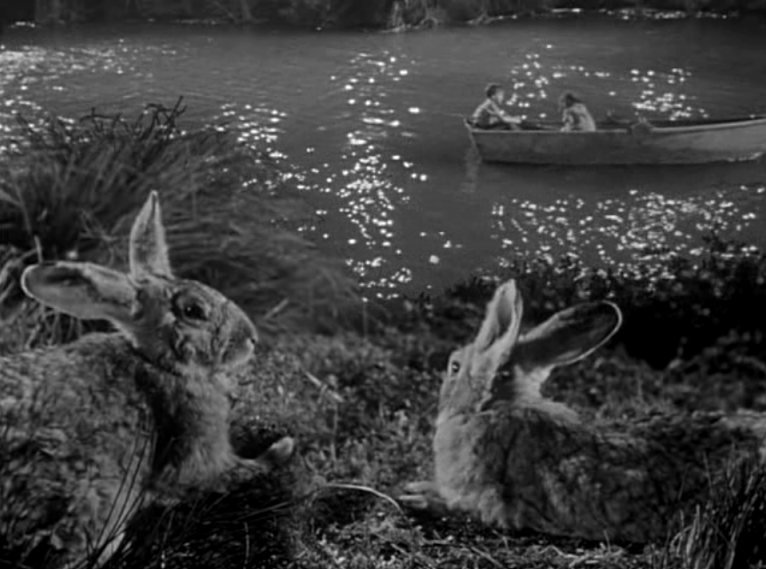
The Night of the Hunter (1955)
Czech New Wave filmmaker Jan Nemec did the same – albeit in more experimental fashion – with his 1964 film Diamonds of the Night, a feverish tale of two teenage boys who escape from a train bound for a concentration camp and are haunted by visions brought on by fear and hunger. The violent shattering of innocence during wartime is a chance for the filmmaker to point the finger at the adult world – think of the j’accuse of Germany Year Zero (Roberto Rossellini, 1948).
Films about childhood often show the child forced into premature adulthood and in no film is this more terrifyingly depicted than in Come and See (Elem Klimov, 1985). Over the course of its 136 minutes, we see teenager Flor (Alexei Kravchenko) physically and mentally transformed by the brutality he’s forced to witness. Klimov’s purposely relentless approach leaves very little space for dream or fantasy. Who can forget the close-ups of Flor toward the end of the film – bruised, traumatised, prematurely aged, left alive purely by chance?
If we were to place Klimov’s depiction of childhood at one end of a very wide spectrum, at the other end we would find Shirley Temple. While the likes of Ivan and Flor are eventually beaten down by the adult world, the majority of Temple’s good-humoured, enthusiastic characters are there to make grown-ups see the error of their ways.
Rebellion
Around the same time that little Shirley was singing and tap-dancing her way into audiences’ affections, the idea of children ‘taking over’ was also the subject of Zéro de conduite (Jean Vigo, 1933), the story of a rebellion at an all-boys boarding school. Vigo’s close identification with the rambunctious kids makes for a formally dazzling evocation of children breaking free from the constraints placed on them by adults (here depicted as grotesque figures except for Jean Dasté’s Chaplinesque Monsieur Huguet).
Twenty-five years later, François Truffaut made The 400 Blows (1959), another picture about youthful rebellion, a theme that was carried on into Maurice Pialat’s Truffaut-produced feature debut Naked Childhood (1969). In Pialat’s film, ten-year-old François (Michel Terrazon) is moved from one foster home to another, seemingly unable to settle and becoming ever more troublesome. Pialat never explains François’s antics; like the foster parents in the film, the audience is left to wonder what makes the child act the way he does.
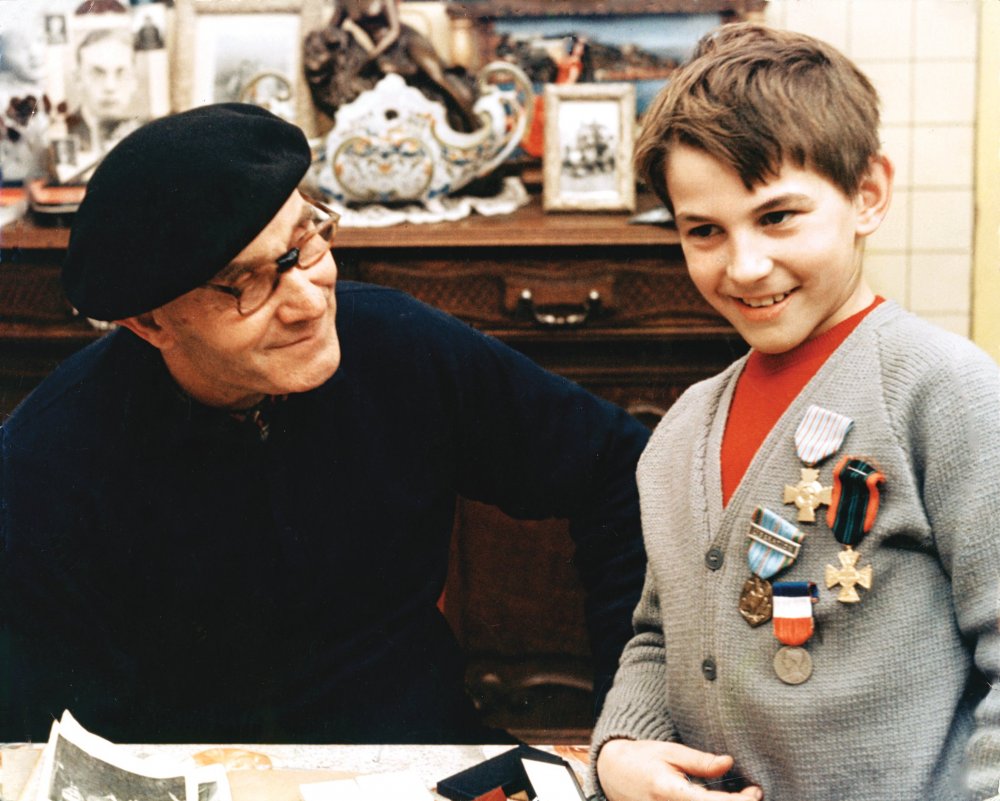
Naked Childhood (1969)
A decade later, Pialat returned to questions of youth with Graduate First (1979), a follow-up of sorts to Naked Childhood. Similarly unsentimental in tone, the film focuses on the lives of a group of disaffected teenagers in the northern French town of Lens.
Arguably Pialat’s best-known work about youth, 1983’s À Nos Amours features an extraordinary performance by Sandrine Bonnaire as a precocious 15-year-old who embarks on a string of affairs to distance herself from her dysfunctional family. Like the earlier two films, À Nos Amours is concerned with the capriciousness and unpredictability of youth – themes reflected in Pialat’s unsweetened approach. Saccharine depictions are, of course, the main problem when it comes to childhood and the cinema, and while it’s a criticism that certainly can’t be levelled at Pialat, it remains all too common.
Loss
Italian director Luigi Comencini made several films featuring child protagonists. Misunderstood (1969) stars Anthony Quayle as a recently widowed English diplomat in Florence who fails to understand that his eight-year-old son’s wayward behaviour is part of the boy’s grieving process.
Set during World War II, René Clément’s Forbidden Games (1952) tells of Paulette (Brigitte Fossey), a five-year-old girl who is orphaned by an aerial bombardment. She ends up at a farm and becomes friends with the farm owner’s son, 12-year-old Michel (Georges Poujouly) who helps her build a cemetery for small animals. Clément presents this as an episode of post-traumatic play, an attempt by Paulette to start to come to terms with her loss.
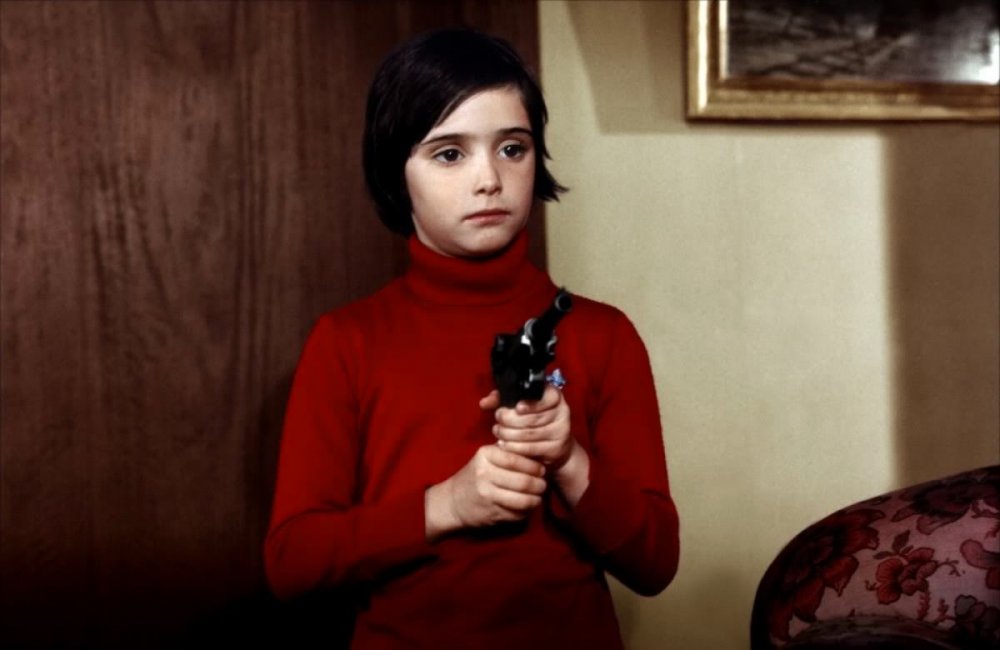
Cría cuervos (1976)
Given their subject matter, both Misunderstood and Forbidden Games can, of course, be forgiven for their sentimentality, but a film such as Carlos Saura’s Cría Cuervos (1976) shows an alternative way of depicting loss. Rather than follow the linear structure of Comencini and Clément, Saura’s film is fragmented – a closer reflection of true childhood experience, especially when faced with trauma. When eight-year-old Ana (Ana Torrent) discovers her father dead in his bedroom after an apparent heart attack, she is convinced she has poisoned him. She then sees her mother in the kitchen, only for Saura to reveal that Ana’s mother had in fact died some time before. Unable to fully grasp what has happened to the family and having now to deal with an authoritarian aunt, Ana’s subjectivity is relayed through a narrative that blends past and present, fantasy and reality.
Cría Cuervos is the second of Torrent’s two exceptional childhood performances of the 1970s. Made three years earlier, Victor Erice’s The Spirit of the Beehive (1973) employs a similar structure, only this time the story – set in a Castilian village in 1940 – is about the impact of cinema on an impressionable young mind, how a young child deals with images she is perhaps not quite ready for. This leads us to consider a group of films that are concerned with the child as a witness, witness not necessarily to horrors of the magnitude of Come and See, but to events that nonetheless place them in a dangerous position.
Witness
There are, of course, countless films that feature the child as witness to criminality. Such scenes are often presented as flashbacks to explain the motivation behind the action of the characters as adults. It’s far more unusual to have the whole story unfold from the child’s point of view. In Carol Reed’s The Fallen Idol (1948), Phillipe (Bobby Henrey), the young son of a foreign ambassador in London, becomes embroiled in a secret concerning the family butler, Baines (Ralph Richardson). Adapted by Graham Greene from his story ‘The Basement Room’, it’s a film in which the tension – as Vicky Lebeau says in her book Childhood and Cinema – is dependent on the fallibility of the child’s perception.
Reed – who also featured child protagonists in later works such as A Kid for Two Farthings (1954) and Oliver! (1968) – makes sure that many of the key events in the picture are seen from Phillipe’s perspective. The chiaroscuro deep-focus compositions that Reed would take to new levels with The Third Man (1949) are already very much in evidence.
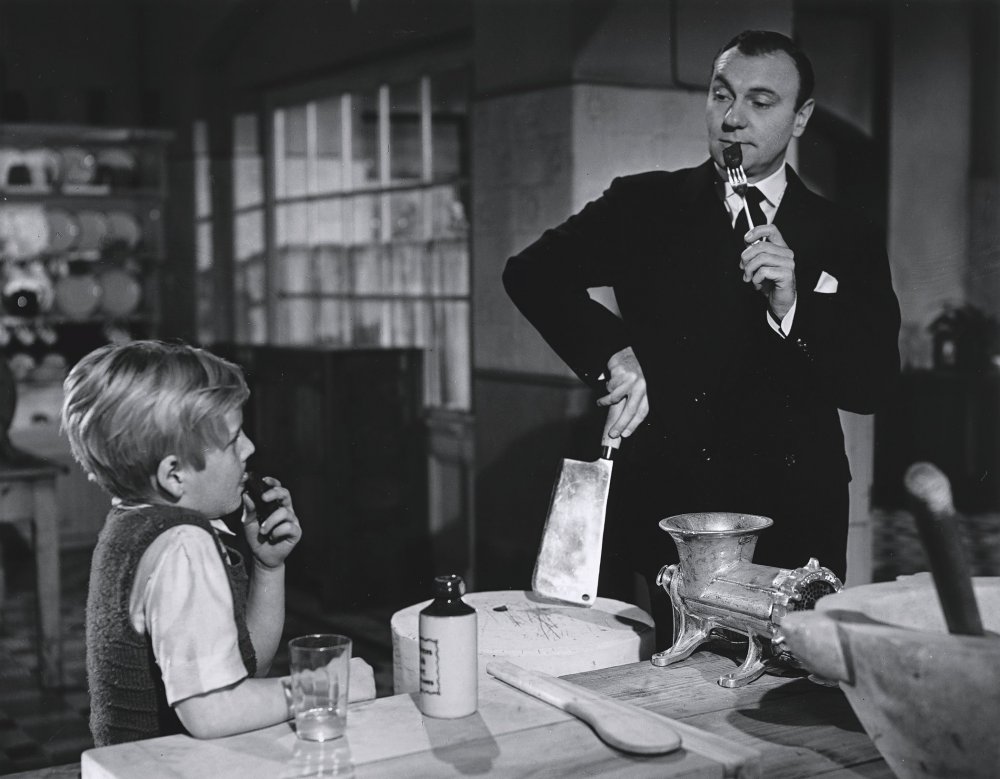
The Fallen Idol (1948)
Made in the US a year after The Fallen Idol, Ted Tetzlaff’s The Window (1949) is another suspenseful film on the theme. A world away from Phillipe’s privileged upbringing, we find little Tommy (Bobby Driscoll), the son of working class parents living in a crowded New York tenement. Bobby has a habit of crying wolf, so when he appears to have witnessed a murder late one balmy summer night, there are very few adults willing to believe him.
Tetzlaff made his name as a cinematographer in the 30s and 40s and shot Alfred Hitchcock’s Notorious (1946) before adapting The Window from a Cornell Woolrich story. Interestingly, Woolrich would also provide the source material for Hitchcock’s famous film on adult voyeurism, Rear Window (1954).
At the beginning of Peter Weir’s Witness (1985), eight-year-old Amish boy Samuel (Lukas Haas) witnesses a murder in the toilet of a Philadelphia train station. Like The Fallen Idol and The Window, Weir’s framing and shot composition emphasises the child’s limited perspective. As the film progresses, Samuel’s viewpoint alternates with that of the film’s adult protagonist, John Book (Harrison Ford), the detective who has been assigned to work on the case.
Memory
Rather than focus on the child’s act of looking, some of the most affecting pictures on childhood have filmmakers themselves looking back at their youth. Dealing as they do with memory, these works tend to deviate most from traditional narrative structures – think again of Tarkovsky, of Federico Fellini, the films of Terence Davies and Jane Campion, or indeed Claire Denis’s Chocolat (1988).
Fellini drew on childhood memories for many of his films, but children are most prominent in films such as 8½ (1963), Roma (1972) and Amarcord (1973). In his 1980 memoir Fare un Film, Fellini notes: “For children, everything is fantastical because it is unknown, unseen, never tested, the world presents itself to the child without intentions… It’s a huge, marvellous free spectacle, a kind of boundless, breathing amoeba where everything lives, subject and object, confused in one incessant flux.”
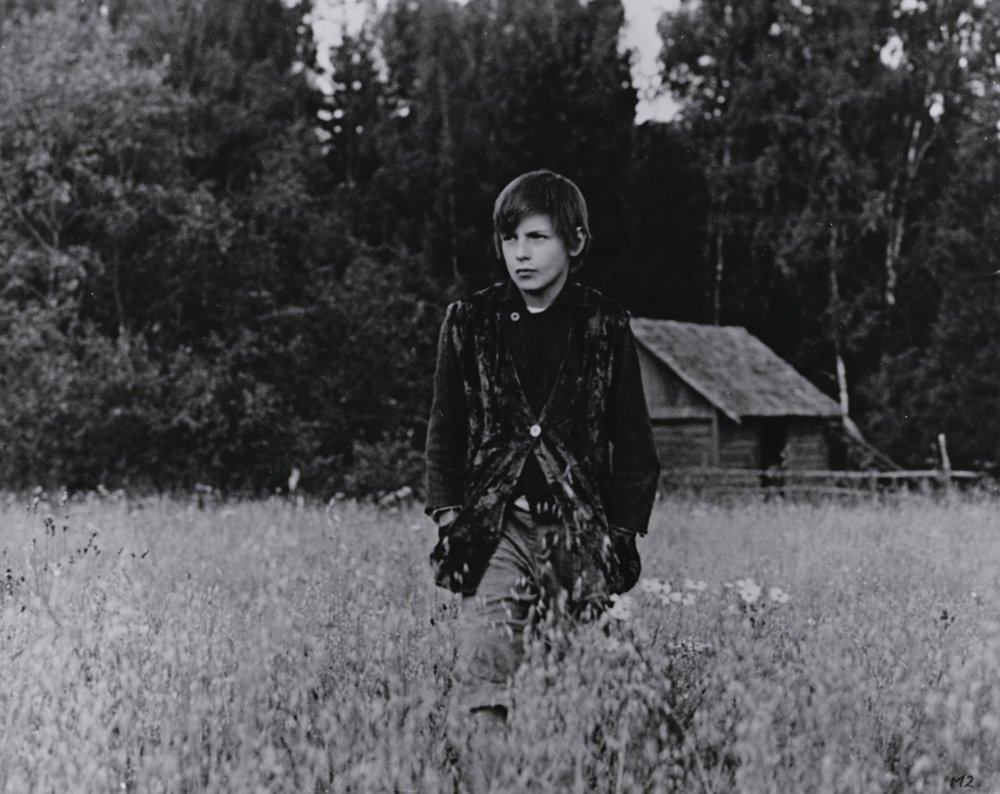
Mirror (1974)
It’s a passage that perfectly captures not only Fellini’s vision of childhood, but also his approach to filmmaking, placing him firmly in the Méliès tradition. In the films of Fellini, memories are not clearly detached from a linear narrative but form part of a free-flowing stream of images as in Saura’s Cría Cuervos and Tarkovsky’s film-poem Mirror (1974).
When Tarkovsky started thinking about the structure of Mirror, he came upon the idea of blending childhood memories with contemporary documentary footage (an interview with his mother) – the two perspectives would then be alternated in the final cut. Ultimately, he felt such an approach would feel too studied (“Artificial and monotonous like a game of ping-pong,” he writes in Sculpting in Time). So out went the more ‘adult’ approach and in came the freer, more associative style.
The child left alone
Having talked about the tension, the push and pull between the worlds of adult and child, what happens when the child is left alone, when there are no rules left to break? In Jack Clayton’s Our Mother’s House (1967), a family of seven children decides not to report their mother’s death from illness for fear of being sent to an orphanage. Instead, they bury their mother in the garden of their large family home and continue life as normal. Clayton charts the full gamut of childhood emotion – carefree and playful one minute, unforgivingly cruel the next – in what remains one of the most sorely underappreciated portraits of the vicissitudes of childhood.
Hirokazu Kore-eda’s Nobody Knows (2003) is also about children left alone. Like Our Mother’s House, adult-less freedom and adventure is counterbalanced by a palpable sense of unease.
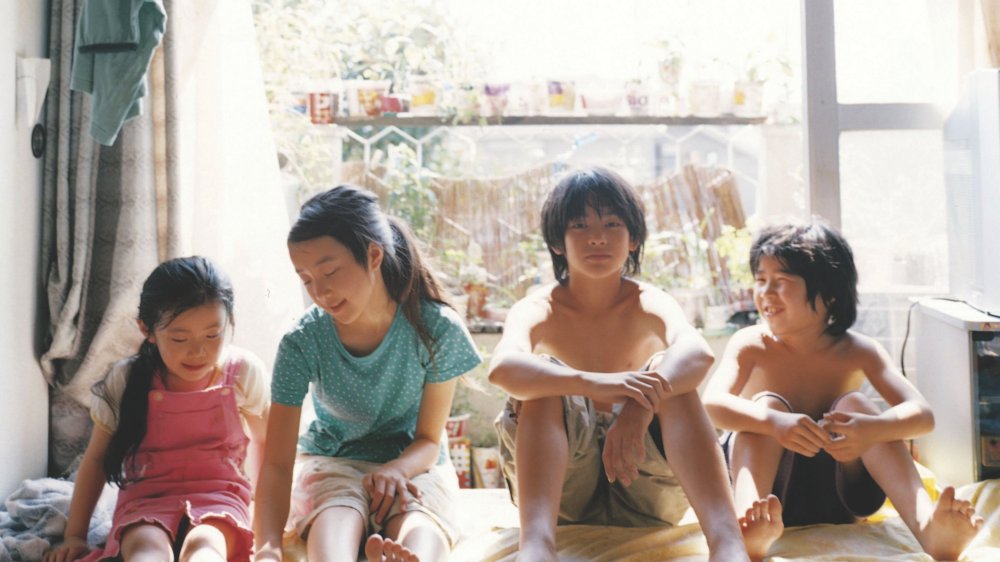
Nobody Knows (2004)
Kore-eda’s is an intimate, synaesthetic approach with the camera, alive to the small details of the children’s lives, much like Korean-American filmmaker So Yong Kim in Treeless Mountain (2008). In this film, Kim’s second feature, two young girls (aged six and four) are left with their aunt as their mother sets off to find their estranged father.
Together with works such as Samira Makhmalbaf’s incredible debut The Apple (1998), the films of Kore-eda and Kim show that to understand the child through film, we don’t always need the restless spatiotemporal flow of Fellini or Tarkovsky – there are kids’ movies that are brilliantly effective at simply watching children be. While it’s certainly true that more formally daring work can reflect a child’s inner world, Mark Cousins is right when he notes near the beginning of A Story of Children and Film, “Art shows us again and again that if we look closely, openly at a small thing, we can see lots in it.”
-
Sight & Sound: the April 2014 issue

Jonathan Glazer on Under the Skin, David Mackenzie on Starred Up, Richard Ayoade on The Double, Mark Cousins on A Story of Children and Film and...
-
The Digital Edition and Archive quick link
Log in here to your digital edition and archive subscription, take a look at the packages on offer and buy a subscription.




